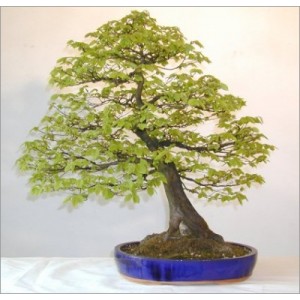The genus Carpinus of the birch family, represented in the United States by C. caroliniana, the American hornbeam or blue beech. Hornbeam is a small tree, and it has a smooth, steel-gray, fluted bark. It grows throughout the eastern half of the United States, especially in moist soil along banks of streams; it is sometimes called water beech. When mature, it is easily recognized by its peculiar bark, by the doubly serrate leaves resembling those of sweet birch, and by the small, pointed, angular winter buds with scales in four rows. The fruit is a small nutlet subtended by a three-lobed serrate bract. The wood is very hard, giving rise to the name iron-wood.






































Write your review
* Required fields
or Cancel